In Mr. Lee’s Digital Electronics class, students are diving into a hands-on project that challenges their technical skills and attention to detail: mastering soldering techniques. This lesson is more than a classroom exercise; it’s an essential skill-building activity that introduces students to practical electronics work used in fields ranging from engineering to advanced manufacturing. Mr. Lee’s class, a part of the school’s Career and Technical Education (CTE) program, is designed to equip students with industry-relevant knowledge and skills that will help them succeed in the modern job market.
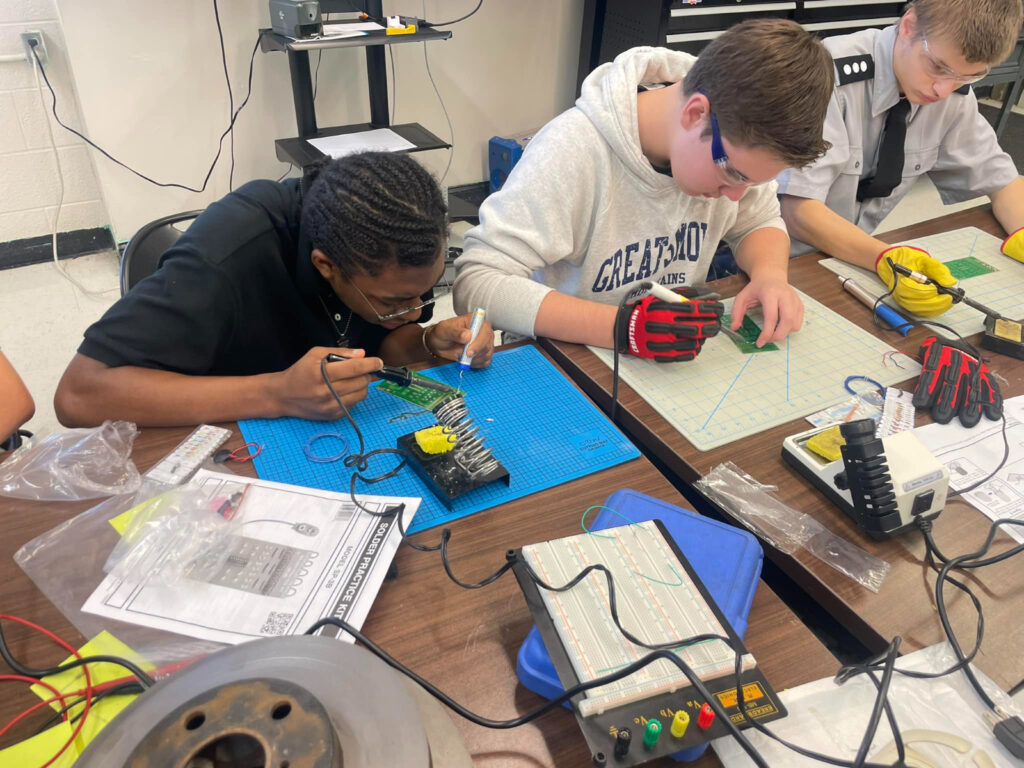
CTE courses like Digital Electronics offer students a unique opportunity to learn through hands-on activities that mimic the types of tasks professionals handle daily. Soldering, a critical skill in electronics and technology industries, allows students to work directly with circuit boards, connecting components and ensuring electrical continuity. By practicing soldering, students develop a skill that is fundamental in many electronics and engineering careers. This real-world application goes beyond theory, enabling students to troubleshoot, refine their hand-eye coordination, and understand the importance of precision—valuable assets in a high-tech workforce.
Learning to solder safely and accurately isn’t just an exercise in dexterity; it teaches students about workplace standards and safety procedures that are integral to electronics professions. They learn to handle materials carefully, follow essential safety guidelines, and understand how minor mistakes in soldering can disrupt entire systems. By fostering this attention to detail early on, Mr. Lee’s course helps students develop a mindset geared toward high-quality work and adherence to best practices. In the job market, these abilities are crucial, especially in industries where quality and precision can make the difference in product functionality and safety.
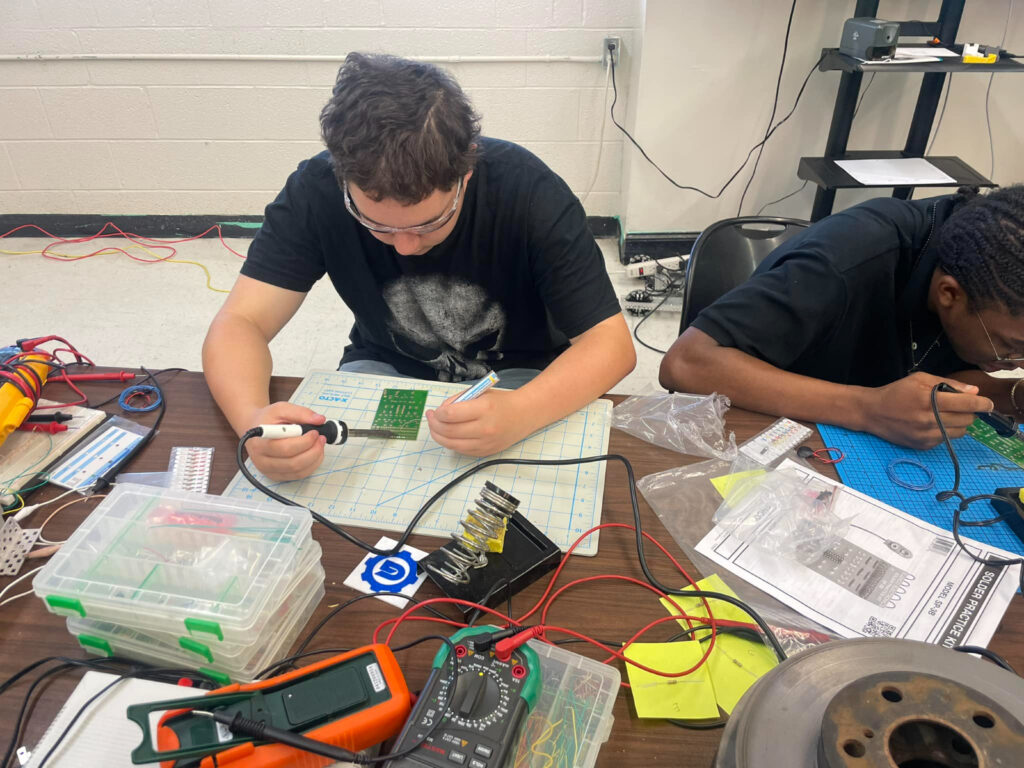
The practical skills gained in this class are part of the larger mission of CTE programs, which aim to prepare students directly for workforce opportunities. As technology and automation become more integrated into industries like manufacturing, telecommunications, and information technology, there is an increasing demand for skilled workers who understand the technical and operational aspects of these fields. Digital Electronics provides students with a foundational knowledge that sets them apart, offering an understanding of both the tools and the theory that underpin electronic and digital systems. Employers often prioritize candidates who have hands-on experience in these areas, as they require less on-the-job training and can integrate seamlessly into technical roles.
Soldering skills also open doors to a variety of post-high school options for students. Many students who excel in Mr. Lee’s class go on to pursue further education in fields such as electrical engineering, robotics, or mechatronics. Having experience with soldering and circuit work provides a solid foundation for these studies, making college-level coursework less daunting. For students interested in directly entering the workforce, these skills qualify them for entry-level positions in electronics manufacturing, assembly, and quality control.
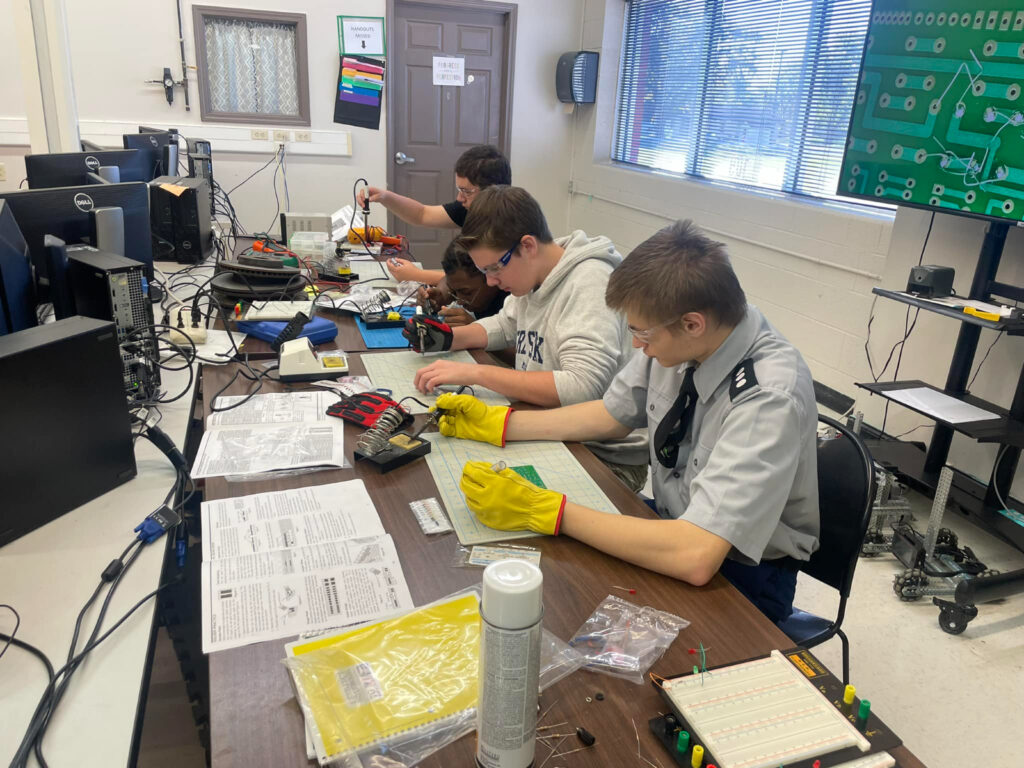
Mr. Lee’s Digital Electronics class fosters soft skills essential to workplace success, such as patience, problem-solving, and resilience. Soldering can be intricate and, at times, frustrating; students often find they must troubleshoot connections, re-solder joints, or correct small mistakes to achieve a functional circuit. This process teaches them persistence and a methodical approach to work—qualities that employers in all industries value. The ability to stay calm under pressure and systematically address issues is a skill that will benefit students in any job they pursue.
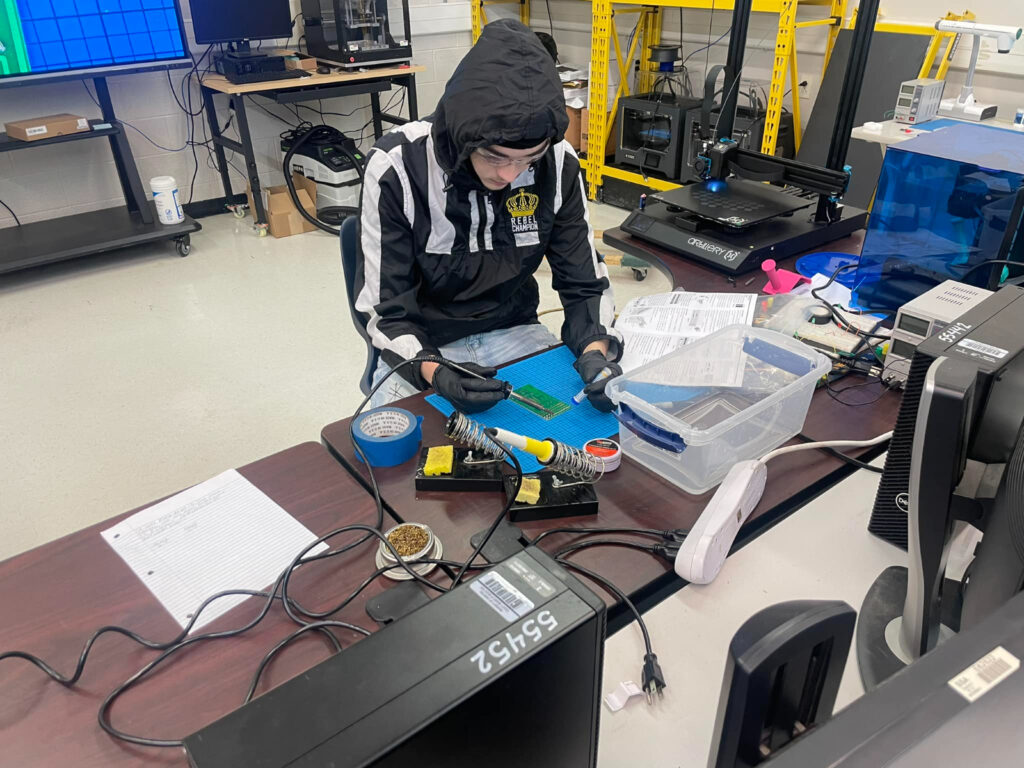
CTE programs like this also address the skills gap in the technical labor market. Many industries, particularly those involving skilled trades and technical knowledge, are experiencing a shortage of qualified workers. By offering courses like Digital Electronics, schools are actively preparing students to fill these in-demand roles, meeting a critical need in the job market. For the students, it means greater career opportunities and the ability to earn competitive wages in fields where skilled labor is highly valued. In this way, Mr. Lee’s class contributes not only to individual student success but also to the broader economic landscape by helping create a capable, technically skilled workforce.
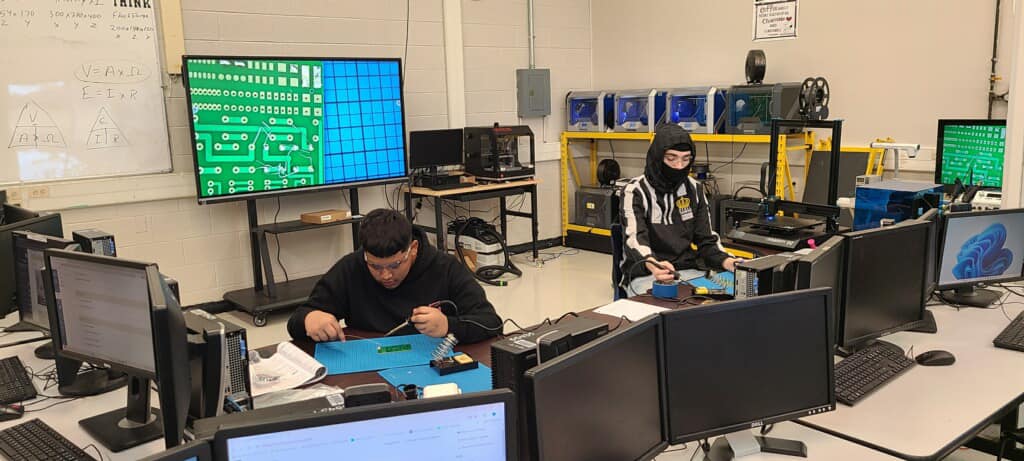
Ultimately, Mr. Lee’s Digital Electronics class exemplifies the value of CTE programs in education today. By introducing students to practical skills like soldering, they’re gaining hands-on experience that prepares them for success in college, careers, and beyond. Through this project, students develop technical proficiency, safety awareness, and the ability to think critically and solve problems—key competencies that translate directly into real-world job settings. As they complete their soldering tasks, these students are building a toolkit of skills and knowledge that will serve them well, laying the groundwork for fulfilling careers in the dynamic fields of technology and electronics.


COMMENTS